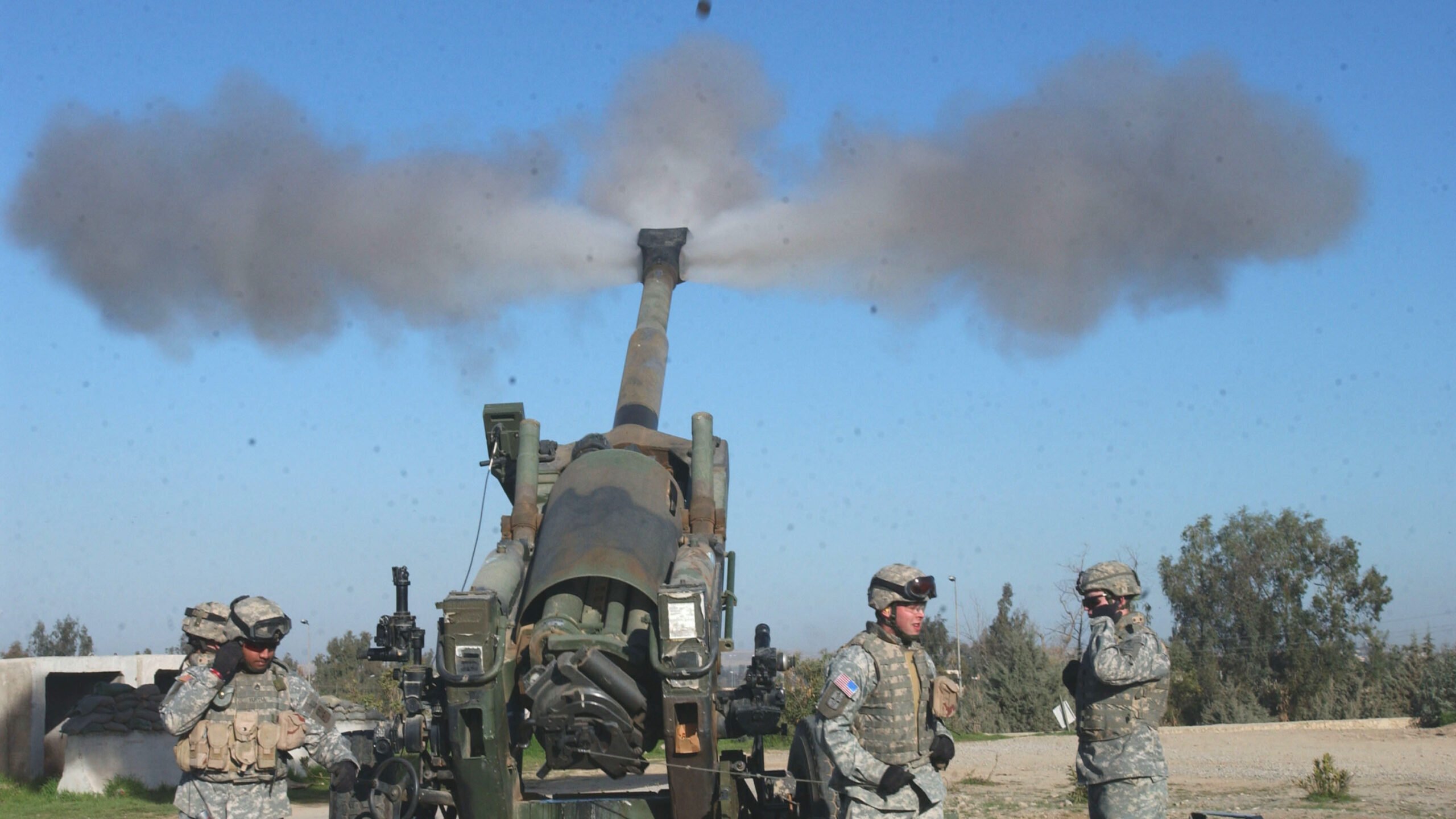
US Army Charlie Battery, 4th Battalion, 11th Field Artillery perform a series of 155mm calibration fires to ensure accuracy in brigade operations. (DVIDS)
BELFAST — In a week when the European Union (EU) agreed to a “historic” €2 billion ($2.18 billion) artillery shell deal to try and meet the extraordinary demand from Ukrainian authorities for the supply of 350,000 units per month, NATO officials have also called on the alliance to shore up anti-tank munitions supplies and resupply lines.
The EU ammunition plan, referred on social media by EU foreign policy chief Josep Borrell Fontelles as “a historic decision,” hopes to see 1 million artillery shells delivered to Ukraine inside the next 12 months, with member states also pledging to replenish their own national artillery shell stocks and increase weapons production.
Difficulties in meeting those targets are, however, likely to emerge as manufacturers continue to face weapon component shortages and struggle to meet exceptional wartime demands. European decision-makers are also having to contend with a number of other short-term issues, mainly tied to land-based equipment and logistics.
“We need to think about tank ammunition, anti-tank ammunition, increase the capabilities of military mobility, lines of resupplies and communication,” said Ivan Caruso, an Italian Brigadier General and Secretary of the NATO Military Committee, during a Tuesday panel discussion on stockpiles hosted by French defense and security events planner COGES and moderated by Breaking Defense reporter Ashley Roque.
Kyiv’s call for 350,000 artillery shells a month, shows demand has effectively doubled since Vadym Skibitsky, deputy head of Ukraine’s military intelligence, said in June that its armed forces were expending between 5,000 to 6,000 artillery rounds a day.
Under a two-year “fast track” project led by the European Defence Agency (EDA), 17 EU member states and Norway also agreed Monday to jointly procure 155mm artillery rounds.
“We are taking a key step towards delivering on our promises to provide Ukraine with more artillery ammunition,” said Fontelles
The EDA plan follows a wide range of measures announced by NATO to support similar endeavors, starting with the decision in June 2022 to “preposition more equipment and weapon stockpiles in the east of the alliance,” according to the latest NATO annual report, released Tuesday.
A total of eight multinational battlegroups are also supported by the alliance’s Multinational Ammunition Warehousing project, designed to “transform” ammunition storage and life cycle management.
Land, Air and Maritime Battle Decisive Munition projects, established years ago, were also “further” increased in 2022, to raise ammunition stockpiles across the alliance and lower prices for ammunition.
When discussing industry challenges during NATO’s Extraordinary Plenary Session of the Conference of National Armaments Directors in September, European weapons manufacturers called for “consolidated demand over the long term” to allow them to approve new production facility investments. They also asked for new legislation to be adopted so more diverse supply chains could be secured and “requested support in adapting to the new fiscal realities” relating to increased prices of raw materials, NATO’s annual report 2022 also revealed.
Separately, the Biden administration agreed Monday to a new $350 million military support package for Ukraine which includes the supply of High Mobility Artillery Rocket Systems (HIMARS) ammunition, 155mm artillery rounds and High-speed Anti-radiation missiles (HARMs).
Move over FARA: General Atomics pitching new Gray Eagle version for armed scout mission
General Atomics will also showcase its Mojave demonstrator for the first time during the Army Aviation Association of America conference in Denver, a company spokesman said.


























